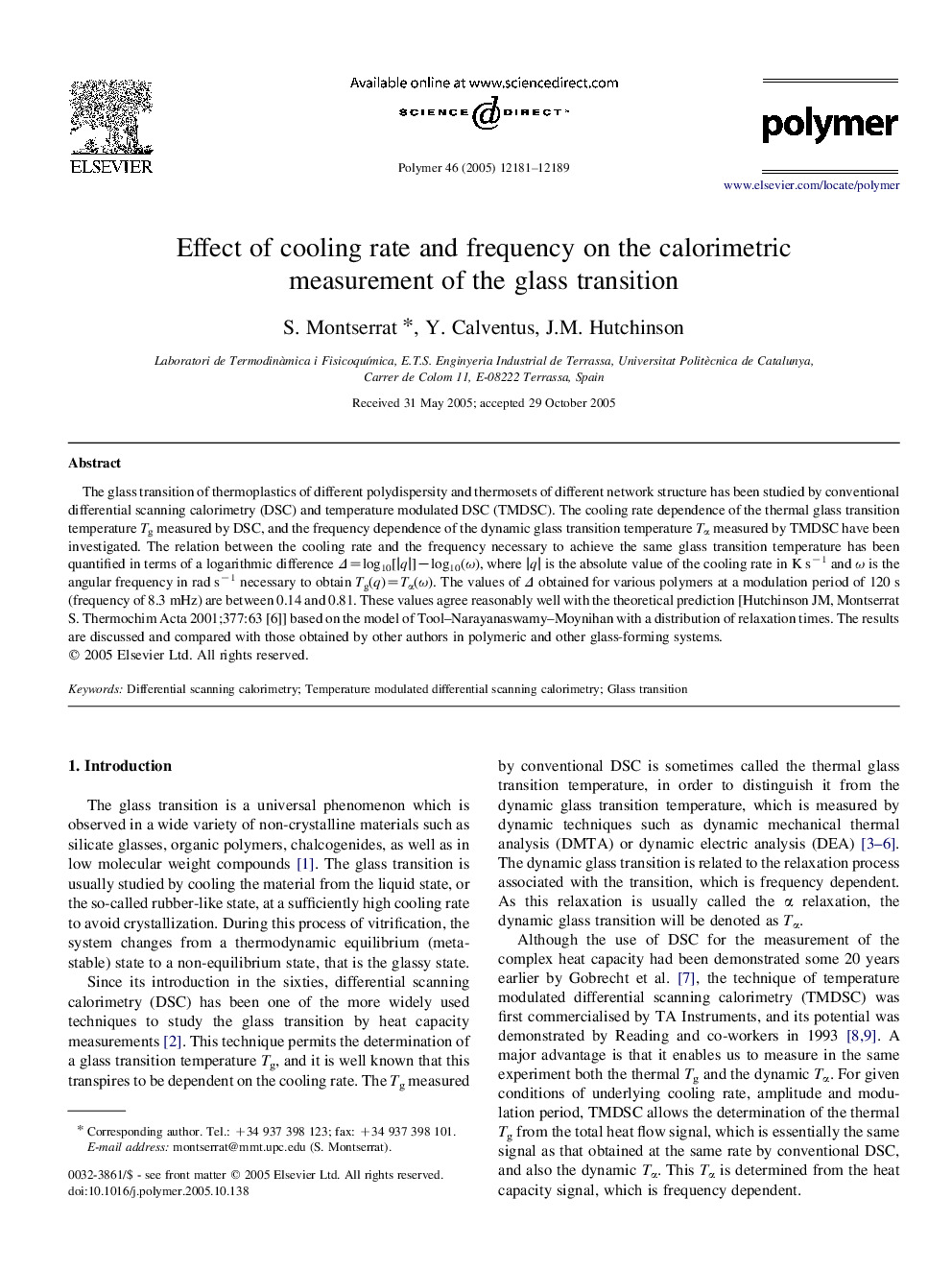| Article ID | Journal | Published Year | Pages | File Type |
|---|---|---|---|---|
| 5189616 | Polymer | 2005 | 9 Pages |
Abstract
The glass transition of thermoplastics of different polydispersity and thermosets of different network structure has been studied by conventional differential scanning calorimetry (DSC) and temperature modulated DSC (TMDSC). The cooling rate dependence of the thermal glass transition temperature Tg measured by DSC, and the frequency dependence of the dynamic glass transition temperature Tα measured by TMDSC have been investigated. The relation between the cooling rate and the frequency necessary to achieve the same glass transition temperature has been quantified in terms of a logarithmic difference Î=log10[|q|]âlog10(Ï), where |q| is the absolute value of the cooling rate in K sâ1 and Ï is the angular frequency in rad sâ1 necessary to obtain Tg(q)=Tα(Ï). The values of Î obtained for various polymers at a modulation period of 120 s (frequency of 8.3 mHz) are between 0.14 and 0.81. These values agree reasonably well with the theoretical prediction [Hutchinson JM, Montserrat S. Thermochim Acta 2001;377:63 [6]] based on the model of Tool-Narayanaswamy-Moynihan with a distribution of relaxation times. The results are discussed and compared with those obtained by other authors in polymeric and other glass-forming systems.
Keywords
Related Topics
Physical Sciences and Engineering
Chemistry
Organic Chemistry
Authors
S. Montserrat, Y. Calventus, J.M. Hutchinson,
